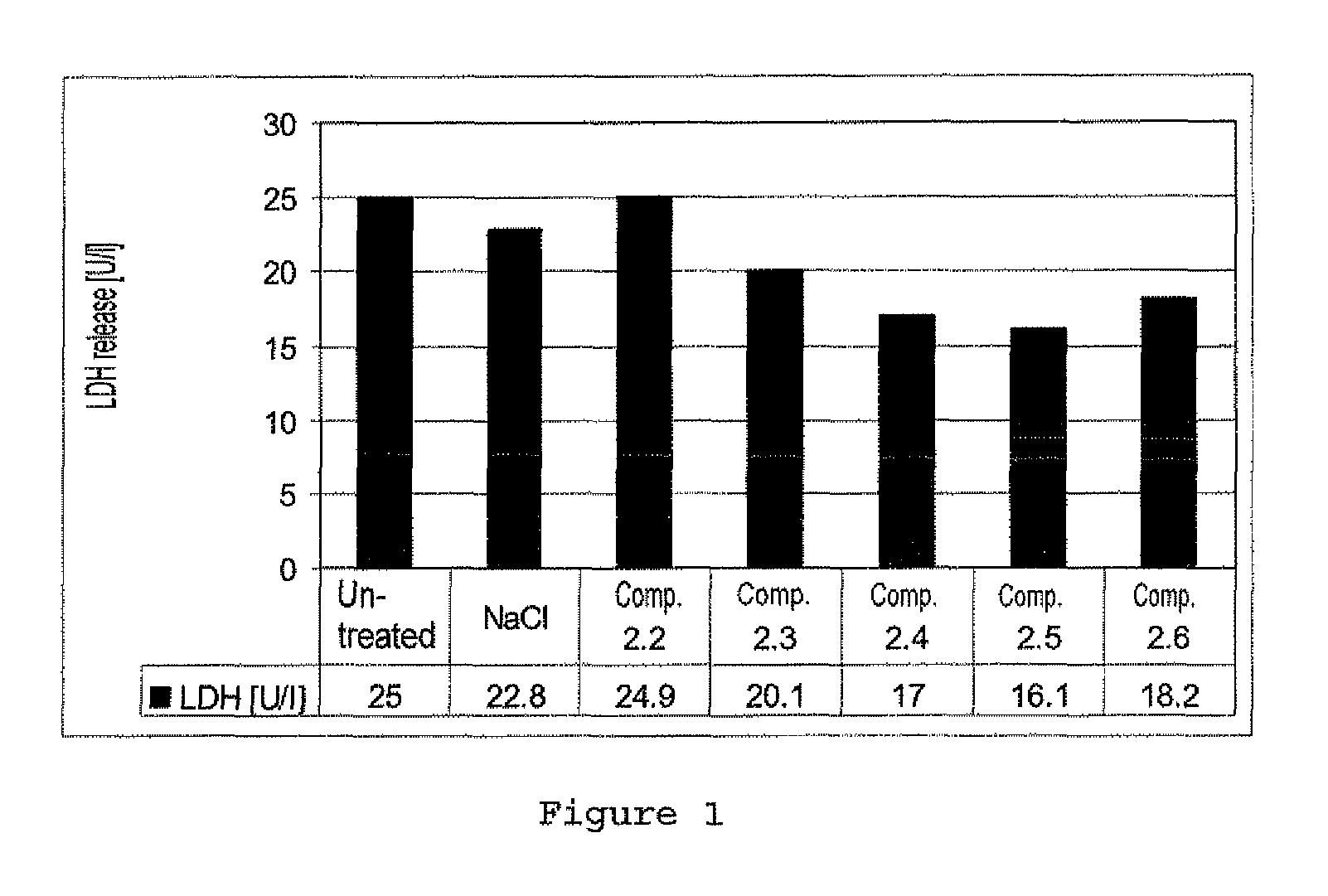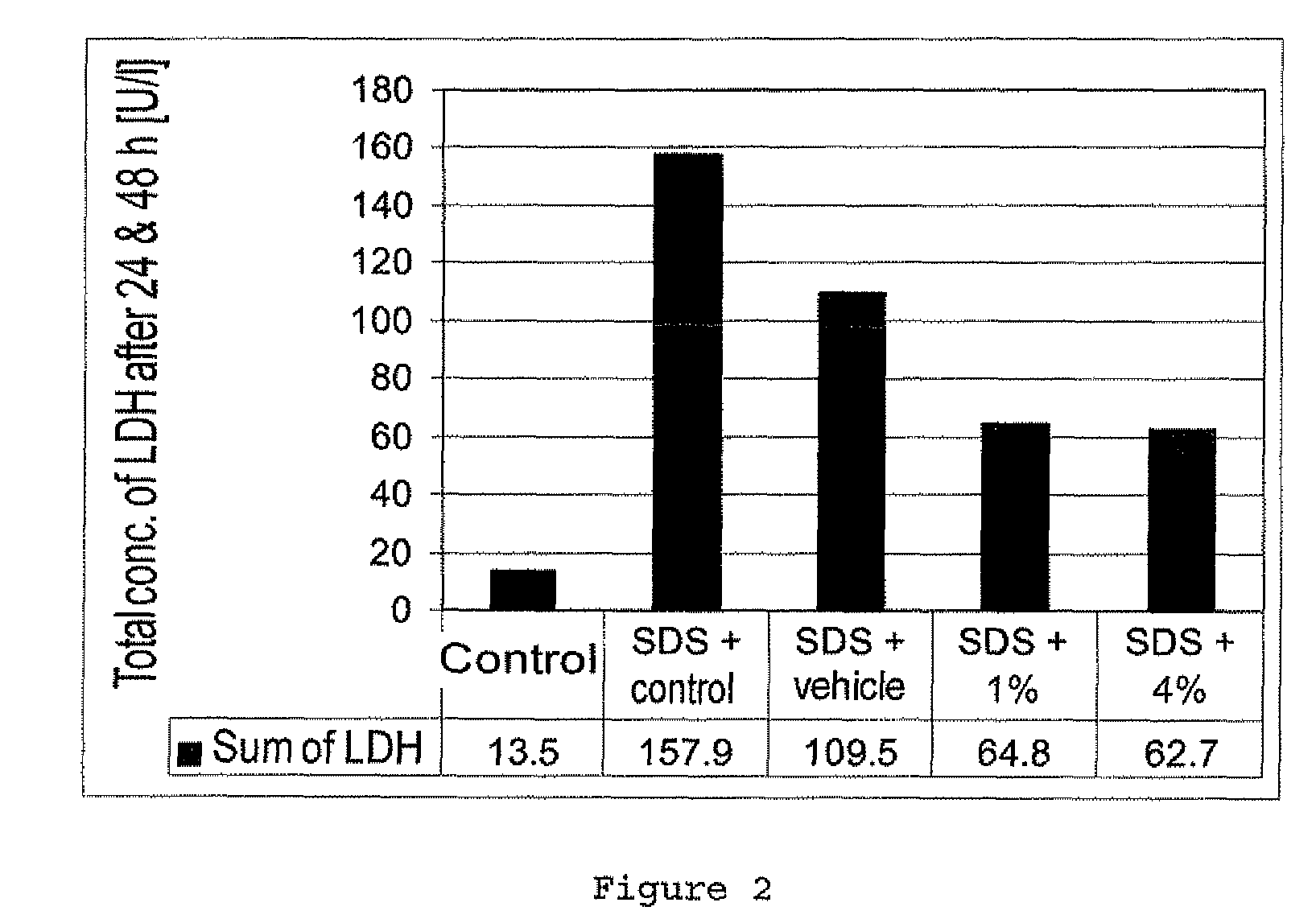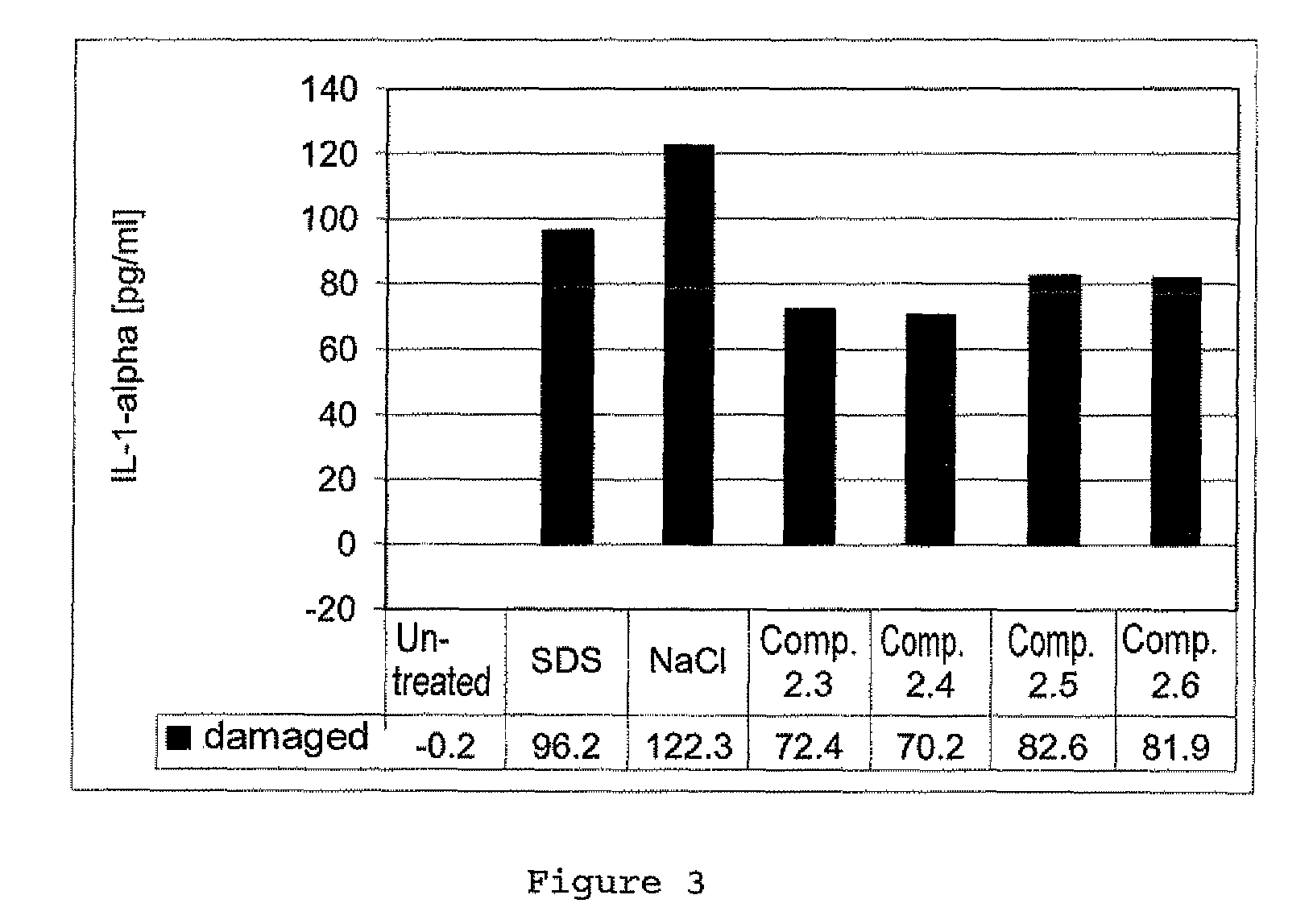Zwitterionic compounds and use thereof
a technology of zwitterionic compounds and compounds, which is applied in the field of zwitterionic compounds, can solve the problems of skin and eye irritation, lower irritation potential of amidopropyldimethyl glycinates, and the fact that amidopropyldimethyl glycinates are not completely free from possible irritative effects
- Summary
- Abstract
- Description
- Claims
- Application Information
AI Technical Summary
Benefits of technology
Problems solved by technology
Method used
Image
Examples
example 1.1
Preparation of Compound 1.1
[0085]In a 500 ml stirred apparatus with reflux condenser and nitrogen inlet, 100 g of formic acid were initially introduced and rendered inert with nitrogen for about 10 minutes. Then, 225 ml of 3-dimethylaminopropylamine were added with stirring and continuing inertization with nitrogen. The salt formation was exothermic and the mixture heated up to about 175° C. and was held at this temperature for about 4-5 h. During this time, water forming in the reaction was removed from the mixture via a column. If, by reference to the acid number, a degree of conversion of about 98% was reached, excess DMAPA was removed by means of vacuum distillation. The content of tertiary nitrogen in the purified end product was 10.4%.
example 1.2
Preparation of Compound 1.2
[0086]In a 500 ml stirred apparatus with reflux condenser and nitrogen inlet, 133 g of lactic acid were initially introduced and rendered inert with nitrogen for about 10 minutes. Then, 188 ml of 3-dimethylaminopropylamine were added with stirring and continuing inertization with nitrogen. The salt formation was exothermic and the mixture heated up to about 150° C. and was held at a temperature of 175° C. for about 4-5 h. During this time, water forming during the reaction was removed from the mixture via a column. If, by reference to the acid number, a degree of conversion of about 98% was reached, excess DMAPA was removed by means of vacuum distillation. The content of tertiary nitrogen in the purified end product was 8.14%.
example 1.3
Preparation of Compound 1.3
[0087]In a 500 ml stirred apparatus with reflux condenser and nitrogen inlet, 148 g of propionic acid were initially introduced and rendered inert with nitrogen for about 10 minutes. Then, 280 ml of 3-dimethylaminopropylamine were added with stirring and continuing inertization with nitrogen. The salt formation was exothermic and the mixture heated up to about 150° C. and was held at a temperature of 175° C. for about 4-5 h. During this time, water forming during the reaction was removed from the mixture via a column. If; by reference to the acid number, a degree of conversion of about 98% was reached, excess DMAPA was removed by means of vacuum distillation. The content of tertiary nitrogen in the purified end product was 8.91%.
PUM
| Property | Measurement | Unit |
|---|---|---|
| temperature | aaaaa | aaaaa |
| temperature | aaaaa | aaaaa |
| temperatures | aaaaa | aaaaa |
Abstract
Description
Claims
Application Information
 Login to View More
Login to View More - R&D
- Intellectual Property
- Life Sciences
- Materials
- Tech Scout
- Unparalleled Data Quality
- Higher Quality Content
- 60% Fewer Hallucinations
Browse by: Latest US Patents, China's latest patents, Technical Efficacy Thesaurus, Application Domain, Technology Topic, Popular Technical Reports.
© 2025 PatSnap. All rights reserved.Legal|Privacy policy|Modern Slavery Act Transparency Statement|Sitemap|About US| Contact US: help@patsnap.com



